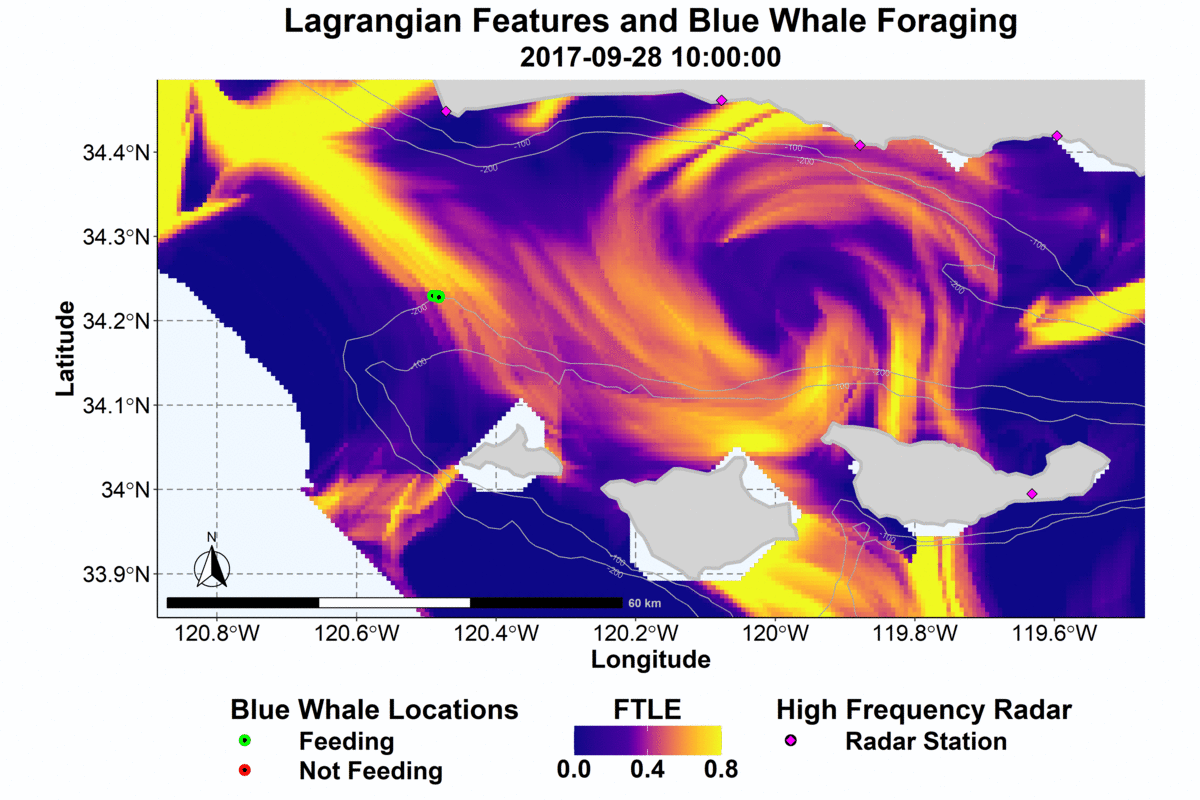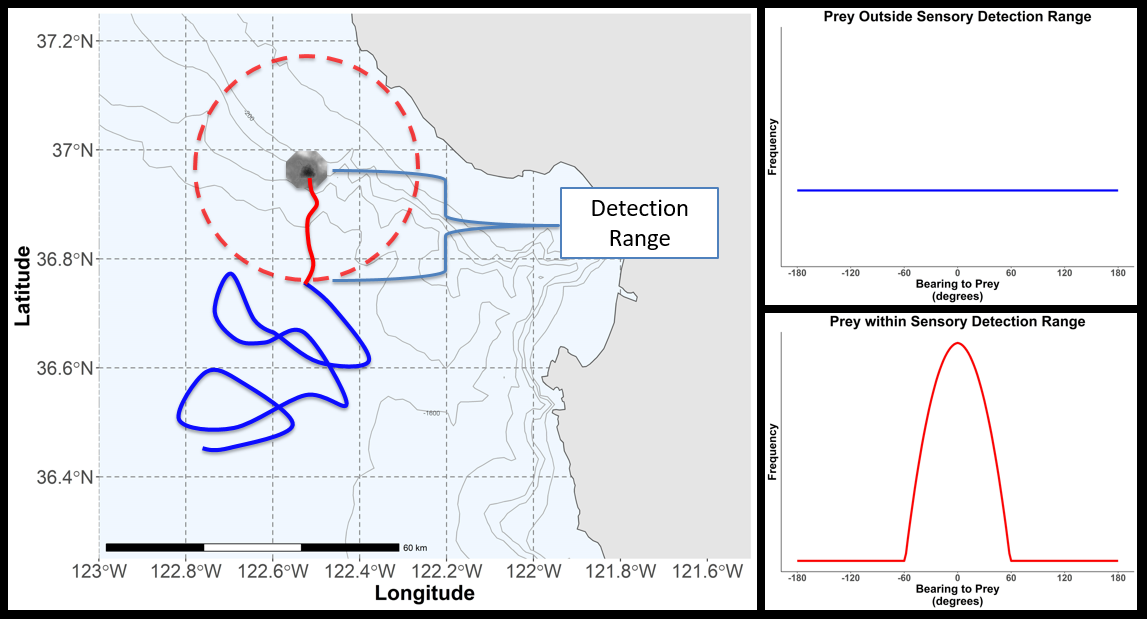Current Research Projects
Identifying Intermediate-Scale Habitat Structure (Ecotones) Using Animal-Borne Tags and Remote Sensing Platforms
 This animation is showing the movements over several days of a blue whale (Balaenoptera musculus) that was tagged off the coast of Southern California in 2017. Feeding behavior (red and green markers) was determined from the stereotypical kinematic signature of blue whale lunge feeding derived from the tag’s high-resolution sensors (e.g. pressure, accelerometer). Whale foraging locations are overlaid with Lagrangian features (i.e. Finite-Time Lyapunov Exponents, FTLE) at hourly increments using data from coastal High-Frequency Radar stations (magenta markers). FTLE was calculated by integrating a grid of tracers backward in time over a 48-hour period for each time-step, with higher values representing areas where we would predict particles to accumulate.
This animation is showing the movements over several days of a blue whale (Balaenoptera musculus) that was tagged off the coast of Southern California in 2017. Feeding behavior (red and green markers) was determined from the stereotypical kinematic signature of blue whale lunge feeding derived from the tag’s high-resolution sensors (e.g. pressure, accelerometer). Whale foraging locations are overlaid with Lagrangian features (i.e. Finite-Time Lyapunov Exponents, FTLE) at hourly increments using data from coastal High-Frequency Radar stations (magenta markers). FTLE was calculated by integrating a grid of tracers backward in time over a 48-hour period for each time-step, with higher values representing areas where we would predict particles to accumulate.
Blue whale sensory ecology at multiple scales
 Hypothetical depiction of a predator’s search behavior outside (blue track in left panel, top right panel) and inside (red track in left panel, bottom right panel) the sensory detection range. A shift to directed movement toward the stimulus is predicted once the predator enters the sensory detection range (red dashed line in left panel). Adapted from: Hein, A.M., Martin, B.T. Information limitation and the dynamics of coupled ecological systems. Nat Ecol Evol 4, 82–90 (2020).
Hypothetical depiction of a predator’s search behavior outside (blue track in left panel, top right panel) and inside (red track in left panel, bottom right panel) the sensory detection range. A shift to directed movement toward the stimulus is predicted once the predator enters the sensory detection range (red dashed line in left panel). Adapted from: Hein, A.M., Martin, B.T. Information limitation and the dynamics of coupled ecological systems. Nat Ecol Evol 4, 82–90 (2020).